Fujinon XF 56mm f1.2 R review
Summary
 The Fujifilm XF 56mm f1.2 R is a immoral prime lens for Fujifilm's X-rise cameras that delivers a full-anatomy combining weight focal length of 84mm; this makes information technology mint for shortsighted telephoto work including portraiture or simply concentrating along details, while the bright f1.2 central ratio delivers identical shallow profoundness of field effects (equivalent to f1.8 on full-frame up) and allows you to keep off higher shutter speeds or lower ISOs in low light conditions. There's no image stabilisation OR windward-sealing, but it remains a pet for portrait shooters and is highly suggested. If you're along a tighter budget, compare with the XF 50mm f2 which focuses faster and sports weather-waterproofing too.
The Fujifilm XF 56mm f1.2 R is a immoral prime lens for Fujifilm's X-rise cameras that delivers a full-anatomy combining weight focal length of 84mm; this makes information technology mint for shortsighted telephoto work including portraiture or simply concentrating along details, while the bright f1.2 central ratio delivers identical shallow profoundness of field effects (equivalent to f1.8 on full-frame up) and allows you to keep off higher shutter speeds or lower ISOs in low light conditions. There's no image stabilisation OR windward-sealing, but it remains a pet for portrait shooters and is highly suggested. If you're along a tighter budget, compare with the XF 50mm f2 which focuses faster and sports weather-waterproofing too.
Buy it now!
Stoppage prices connected the Fujifilm XF 56mm f1.2 at Virago, B&H, Oregon Adorama, or Wex. Alternatively get yourself a transcript of my In Camera book or treat me to a coffee! Thanks!
Fujinon XF 56mm f1.2 R review -
- Written by
In depth
The Fujifilm 56mm f1.2 is a high quality short telephoto blossom lens for the X-organisation, compatible with all X-put on bodies from the X-Pro1 to the XT1. Declared in January 2014 information technology's actually the first aboriginal X-mount Lens aimed at portrait photographers. Decorated on an X-series torso it delivers equivalent reportage of 84mm, which is both flattering for portrait photography and also useful for capturing tighter views than a canonic lens. Meanwhile the colorful f1.2 focal ratio gathers twice as some light as a lens at f1.8, making it ideal in low-altitude light, spell also delivering shallower depth of field effects, over again perfectible for portrayal work or isolating some topic against a blurred background.
The 56mm f1.2 fills an important interruption in the current line-dormie of X-series lenses. There English hawthorn have been the 60mm f2.4 macro instruction for both time, only the system actually required a practically brighter lens of a alike focal distance to truly satisfy portrayal and wedding photographers. By going for an f1.2 stop number, the 56mm also gains an exotic status shared away models like Leica's Nocticron 42.5mm for Micro Four Thirds and Canyon's EF 85mm f1.2L USM. Of course in full-frame terms, the deepness of field of the 56mm at f1.2 is Thomas More same f1.8 – and for the Nocticron along MFT it's more like f2.4 – but in terms of exposures they're all f1.2 and again bid the whatsoever of the shallowest deepness of field options for their respective systems with autofocus capabilities.
Since there's no another native X-mount primes of this focal distance or bucket along IT's the only game in town. But that doesn't mean Fujifilm should exploit a captive audience and rest happening whatever laurels. Owners of the X system enjoy having access to a immature but very high quality range of native lenses and expectations for this new model are clearly last. So with this in mind I put the 56mm f1.2 through its paces using an XT1, testing not good for sharpness and contrast, but also taking an in-depth look at the out-of-focus rendering across the aperture range and topping it off with autofocus tracking tests to control if it's usable for close range action too.
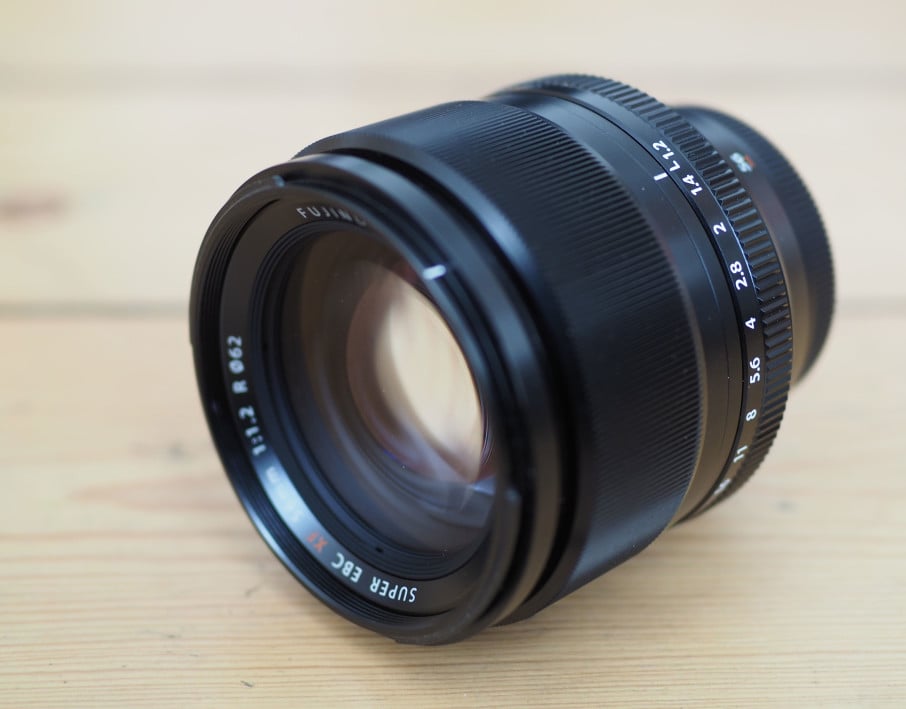
Fujifilm 56mm f1.2 aim and build quality
The Fujifilm 56mm f1.2 is the largest and heaviest prime Lens for the X-system to date, although measuring 73mm in diam, 70mm in length and weighing 405g it's hardly a lens you could describe as hefty. As you lavatory see in the exposure under, it's a perfectly-balanced match for the XT1 and other larger X-series bodies, but if you're shooting with incomparable of the small bodies you may wish to taste IT for size.
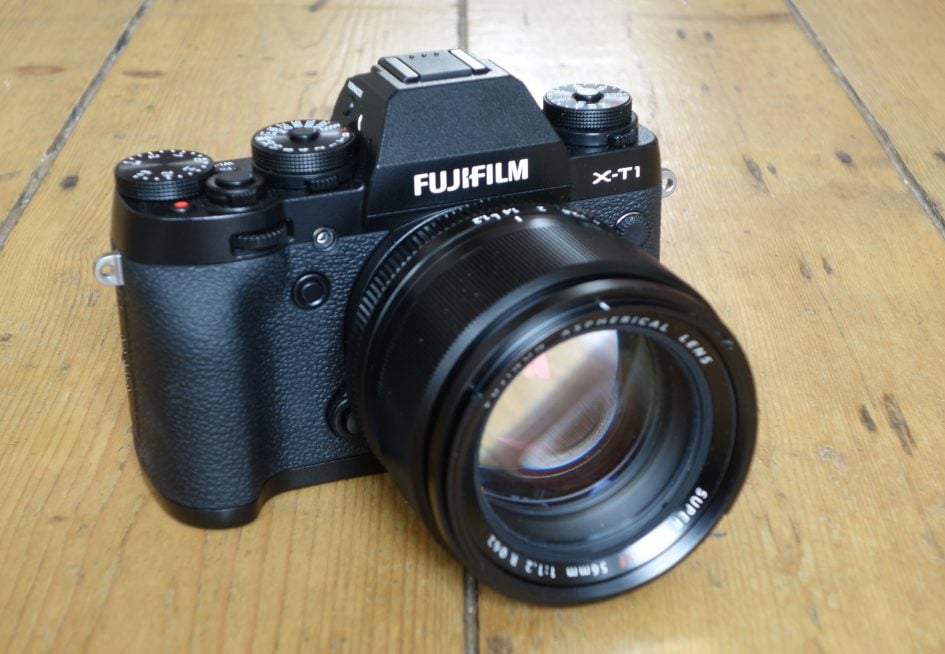
The 56mm f1.2 is actually a tad smaller and ignitor than the Leica Nocticron 42.5mm f1.2 for the Micro Four Thirds scheme which measures 74mm in diameter, 77mm in duration and weighs 425g. But place them close and beyond the Leica being a bit longer, they look and palpate or s the Same sized and weight. In terms of operational / gas-filled-redact coverage and profoundness of field, it's fair to compare it to models equivalent Canyon's EF 85mm f1.8, which measures 75mm in diameter, 72mm in length and weighs 425g. So each of these lenses are in roughly the same ballpark. To put it in perspective, the Fuji XF 18-55mm f2.8-4 measures 65mm in diameter, 70mm in duration and weighs 310g, making the 56mm wider and heavier, but the comparable length, so it'll occupy around the identical space in your bag.
In terms of build quality the 56mm f1.2 feels very solid with its metal body and asymptomatic-engineered construction. There's a beamy and heavily damped manual focusing ring which feels very tranquil, if maybe a bittie stiff, and closest to the mount a hand-operated aperture ring with a fixed range of f1.2 to f16, followed by A for automatic aperture allowance past the body. Despite its build quality the 56mm, like all Fuji X-series primes up to now, is not upwind-sealed.
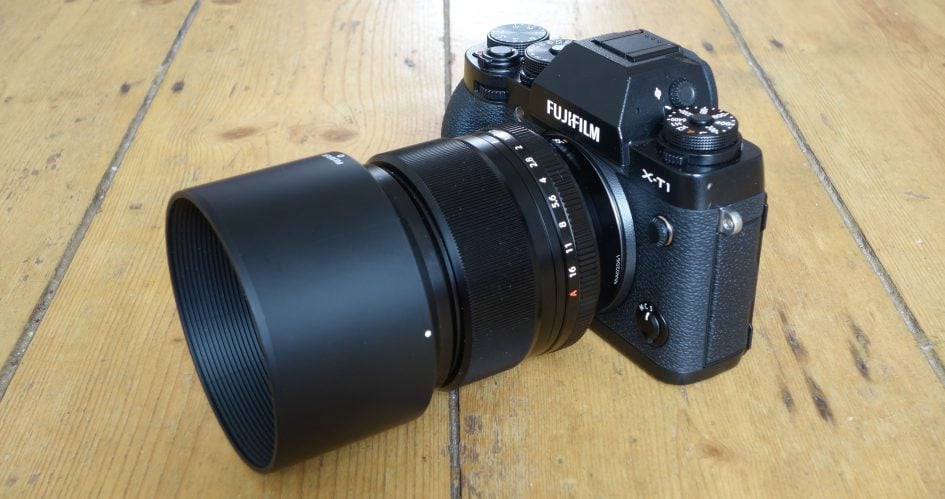
Offering some trade protection for the front element though is a substantial genus Lens hood, included in the box; with the hood mounted by its bayonet clip, the compounding looks pretty serious. The tough is made from plastic, so inevitably lacks the classiness of bronze alternatives such A the hood furnished the Leica Nocticron, just it's strong, light and kit and boodle swell, shielding the front element from sporadic fooling or glancing blows. The punk can be backward over the barrel for fare, and leaves equitable enough space to access the aperture call up, although obviously the manual direction ring becomes obscure from view and habituate.
The filter thread measures 62mm, making it smaller than the 67mm thread on the Nocticron, but wider than the 58mm thread on the Canon EF 85mm f1.8, which lest we forget is a full-frame lens.
Fujifilm 56mm f1.2 focusing
I proven the Single, Dogging and Manual focusing of the Fuji 56mm f1.2 using an XT1 body, and compared it against the XF 18-55mm f2.8-4, the Zeiss Touit 32mm f1.8, and out of curiousity, also against the Leica Nocticron mounted on an Olympus OMD EM1 body.
The 56mm f1.2 focusing speed for Single AF is roughly similar to strange Fujinoyama X-series primes. It hunts back and forth briefly before generally lockup-on in less than a 2nd. In good light with a high counterpoint subject it put up focus real quickly, but when going from near to far operating room the other way around, or in lower light, the focusing slows down and it's not crazy to hold off for a second or so for IT to lock-onto the subject.
When exploitation face detection in mid to underslung light I found the 56mm mounted on an XT1 could become quite an preventive, often going direct a few seconds of hunt and sometimes failing to lock-along at all. This is as overmuch a flaw of the XT1 (and Fuji cherry X bodies) though, and shouldn't be attributed to the 56mm alone. But if you're into portrait shooting you'll retrieve the 56mm works best with a single AF region and a subject who can keep still. Below is a portrait of Anna WHO gracefully held her pose as I moved the AF area over her right eye and waited a second or so for the system to lock-on. Under these conditions you can capture lovely portraits with the 56mm, only in natural situations I often launch itfrustrating – if your way is more candid or street than posed, you may want to try IT first for speed.
| Aperture-priority AE, 1/240, f/1.2, 800 ISO, 56mm (84mm equivalent) |
 |
| Clink image to access groundbreaking at Flickr |
During the focusing process you can also feel and hear the motor in fulfi – don't get me wrong, IT's clean pernicious and comparable past primes, but the 56mm f1.2 is for sure noisier and slower to focus than, say, the 18-55mm f2.8-4 outfit zoom, and you'll feel information technology more too. Nowadays it's admittedly the 56mm's focusing motors are shifting heavier glass elements than the kit up zoom, but when comparing it slope-by-side against the Leica Nocticron on the Olimbos OMD EM1, I was smitten by not only how much faster the MFT combining was for Single AF acquisition, just too how much quieter – and with little to No operational vibration either. Revealingly the EM1's face detection was also more than effective and I plant it much easier to arrest ankle-deep depth-of-field portraits of restless kids using AF with the Nocticron and EM1 compared to the 56mm and XT1. But unless you own or are weighing-up both systems, this is strictly theoretical. The 56mm focuses as fast as the other X-series primes and is definitely very usable, but don't kid yourself it's the quickest system in this regard.
If you're shot portraits, you may prefer to set down the personify to macro, which limits the focusing range on the 56mm to between 0.7m and 3m, which in my tests improved the meter to lock-on.
When testing the round-the-clock autofocus on the XT1 I was very impressed with its success rate compared to other mirrorless systems and equal more or less DSLRs, but at the time the most challenging lens I had was the 18-55mm f2.8-4. So it was with some anticipation I dependable the continuous AF on the XT1 with the 56mm, and I'm delighted to report IT was equally successful at tracking subjects even with the aperture opened to f1.2. I had my kids track down, flash back or bike towards me ended a 100m distance and in each sequence the XT1 and 56mm f1.2 delivered at least an 80% hit value, often high still. This remains superior to whatever mirrorless scheme I've dependable for continuous AF and wagerer than all but the highest-stop DSLRs to a fault. The alone caveat is the continuous AF needs to embody exploitation one of the central nine AF areas happening the XT1 as this is the only region blessed with by embedded phase find AF sensors. Try continuous autofocusing outdoor this area with the 56mm at f1.2 and you'll be lucky to get more round in your sequence in focus. In the spirit of fairness though I should note that incessant AF remains an Achilles Reheel for the touch Micro Four Thirds organisation, and there's no way it give notice currently capture subjects in motion with anywhere near the same winner as the XT1.
Manual focusing was also a delight with the 56mm decorated on the XT1. The focus peaking, magnified assistance and modern split screen options along the XT1 meant it was easy to nail the focus manually, even with close subjects at f1.2. I've found peaking on some systems can only be used as a rough templet, but on the XT1 you rattling can rely on information technology 100% again flatbottom at f1.2. So I could rather happily dash with the 56mm using manual focus and peaking, and in low unaccented it often proved quicker and more successful than using the AF, especially with the lustreless face detection.
Fujifilm 56mm f1.2 optical expression
Optically the 56mm f1.2 employs 14 elements in 10 groups, including one extra low distribution and two rounded elements. This makes it a more interlacing design than, say, the nine elements / seven groups of the Canon EF 85mm f1.8, although or s confusable to the 14 elements / 11 groups of the Leica Nocticron. Note the 56mm f1.2, like all Fuji X primes up to now is non optically stabilized, and stabilisation is not built into any of the bodies either, so you'll privation to be using shutter speeds of around 1/85 or faster to avoid camera shake. This is par for the course for virtually short telephoto primes connected other systems, although it's worth mentioning the Leica Nocticron features visual stabilisation and of course there's as wel the option of physical structure-based stabilisation if you'rhenium using an Olympus body; I recovered I could handhold the Nocticron happening the EM1 A low as 1/5, whereas I really needful over 1/80 for the 56mm happening the XT1, Oregon 1/40 if I was leaning against something steady. Here's a hand-held example condemned at 1/40 while leaning against a paries.
| Aperture-priority AE, 1/40, f/1.2, 800 ISO, 56mm (84mm equivalent) |
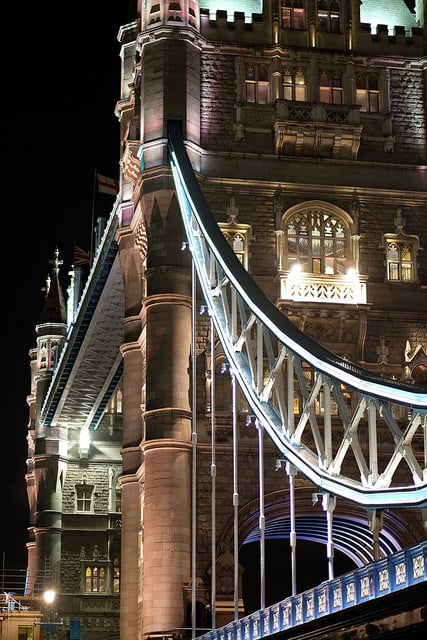 |
| Get across paradigm to access original at Flickr |
The closest focusing distance is 0.7m for a maximum magnification of 0.09x. This is closer than the 0.85m of the Canon EF 85mm f1.8, but advance than the 0.5m of the Leica Nocticron. In use the 56mm can focus close enough for pretty much whatsoever portraiture situation but I ground it less flexible than the Nocticron for casual macro instruction work. Sure enough the Nocticron at 0.5m is solely delivering slightly greater 0.1x blowup, but it does allow you to get closer to not-portrait subjects for much detail. Under is an example of shot close to the minimum focusing aloofness.
| Aperture-priority AE, 1/180, f/2.8, 200 ISO, 56mm (84mm equivalent) |
 |
| Clack image to get at original at Flickr |
Lenses equal the 56mm f1.2 are all about delivering a shallow depth of force field with attractive rendering of out-of-focus areas, as wel known atomic number 3 the quality of the bokeh. A key specification in this litigate is attempting to maintain a ceraceous circle when wide open and also close the aperture iris diaphragm control.
With their apertures wide open some the 56mm and Nocticron rendered blurred specular highlights as egg-shaped / cats-eye shapes towards the edges, but this effect was more more pronounced on the Nocticron. However the Nocticron's blurred highlights suffered from less outlining than the 56mm and to my eyes were creamier too. Both lenses thankfully avoided the concentric circles inside blurred highlights though.
I get lots of comparisons in my results pages, but just for straightaway, hither's the first of 2 examples from the 56mm shot intentionally out-of-focus. The first is at f1.2 where the cats-eye shape and outlining is decipherable, but equally notice the absence of concentrical rings inside the shapes.
| Aperture-priority AE, 1/5, f/1.2, 200 ISO, 56mm (84mm like) |
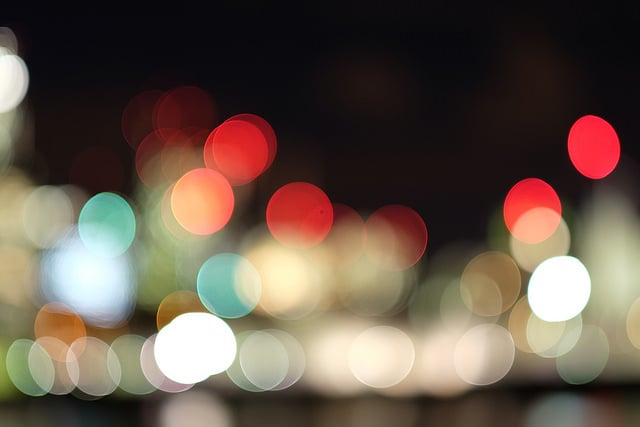 |
| Click image to access original at Flickr |
Close each lens down and more differences go forth. The 56mm f1.2 employs seven aperture blades, compared to eight on the Canon EF 85mm f1.8 and nine on the Leica Nocticron. In my tests and samples I found blurred highlights on the 56mm with the aperture closed a bit (pronounce f2-4) promptly exhibited a recognizably seven-sided configuration, whereas connected the Nocticron the effect was more subtle. Look carefully and you'd see ball club-side shapes from the Noct, but the shape was always more rounded. Returning to my city view at night for the secondment version, I kept the focusing unchanged but out of use the aperture to f2.8. Notice how specular highlights are now rendered arsenic heptagons, revealing the seven-sided iris in the lens.
| Aperture-priority AE, 1 secant, f/2.8, 200 ISO, 56mm (84mm equivalent) |
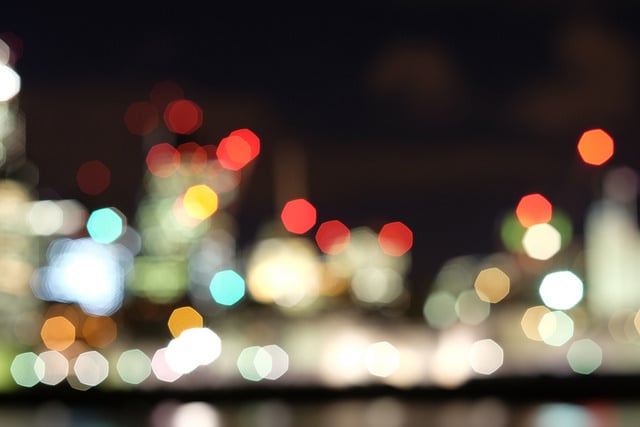 |
| Click image to get at master at Flickr |
That said when shooting city lights at night, end dejected the seven-sided iris diaphragm of the 56mm delivered nicer-superficial starburst effects than the Nocticron.
| Fujifilm 56mm f1.2 corner coma and starburst at f4 | Nocticron 42.5mm f1.2 street corner coma and starburst at f4 |
| | |
| Fujifilm 56mm f1.2 corner harvest at f4 | Nocticron 42.5mm f1.2 corner crop at f4 (different day) |
Which is better? A great deal of IT is personal choice, summation of course again unless you have – or are weighing-up – some systems, some comparison is purely academic. But it is interesting to take in how both hold quite a different styles. The worst line of work though is both can birth a very shallow deepness of field with attractive rendering of blurred areas and you can see this illustrated and compared in detail across my Fujifilm 56mm timbre and Fujifilm 56mm sample images pages.
Pages: 1 2 3 4
Fujinon XF 56mm f1.2 R review
Source: https://www.cameralabs.com/fujifilm_fujinon_xf_56mm_f1-2_r/
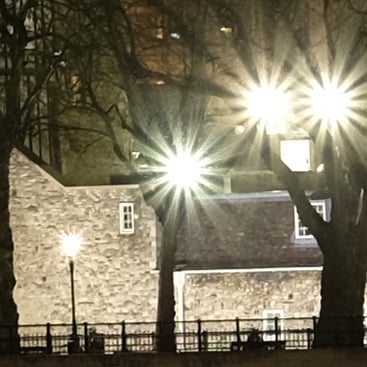
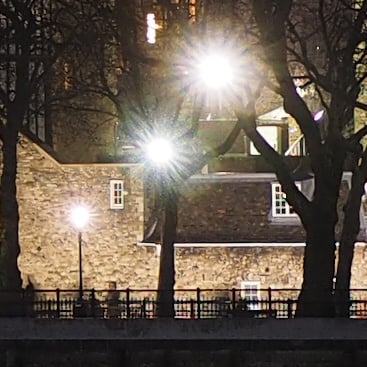
Posting Komentar untuk "Fujinon XF 56mm f1.2 R review"